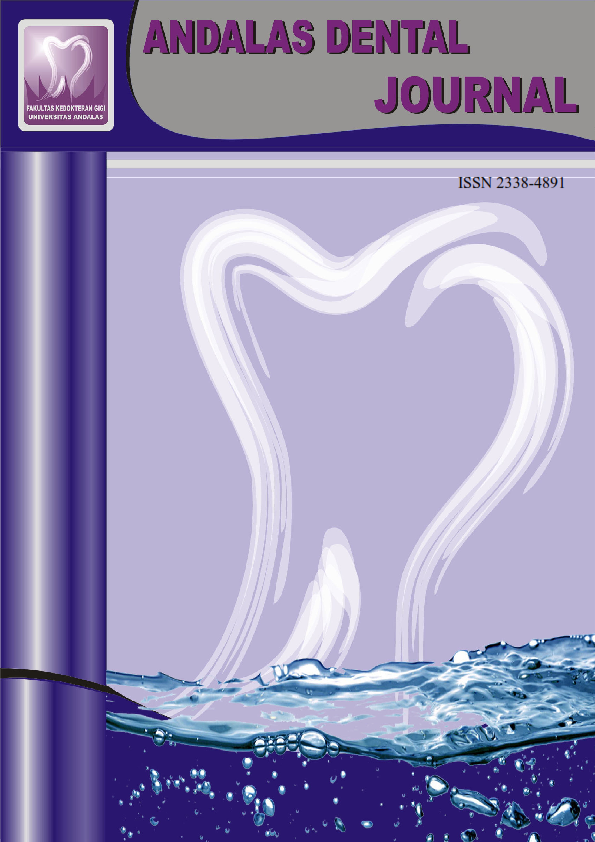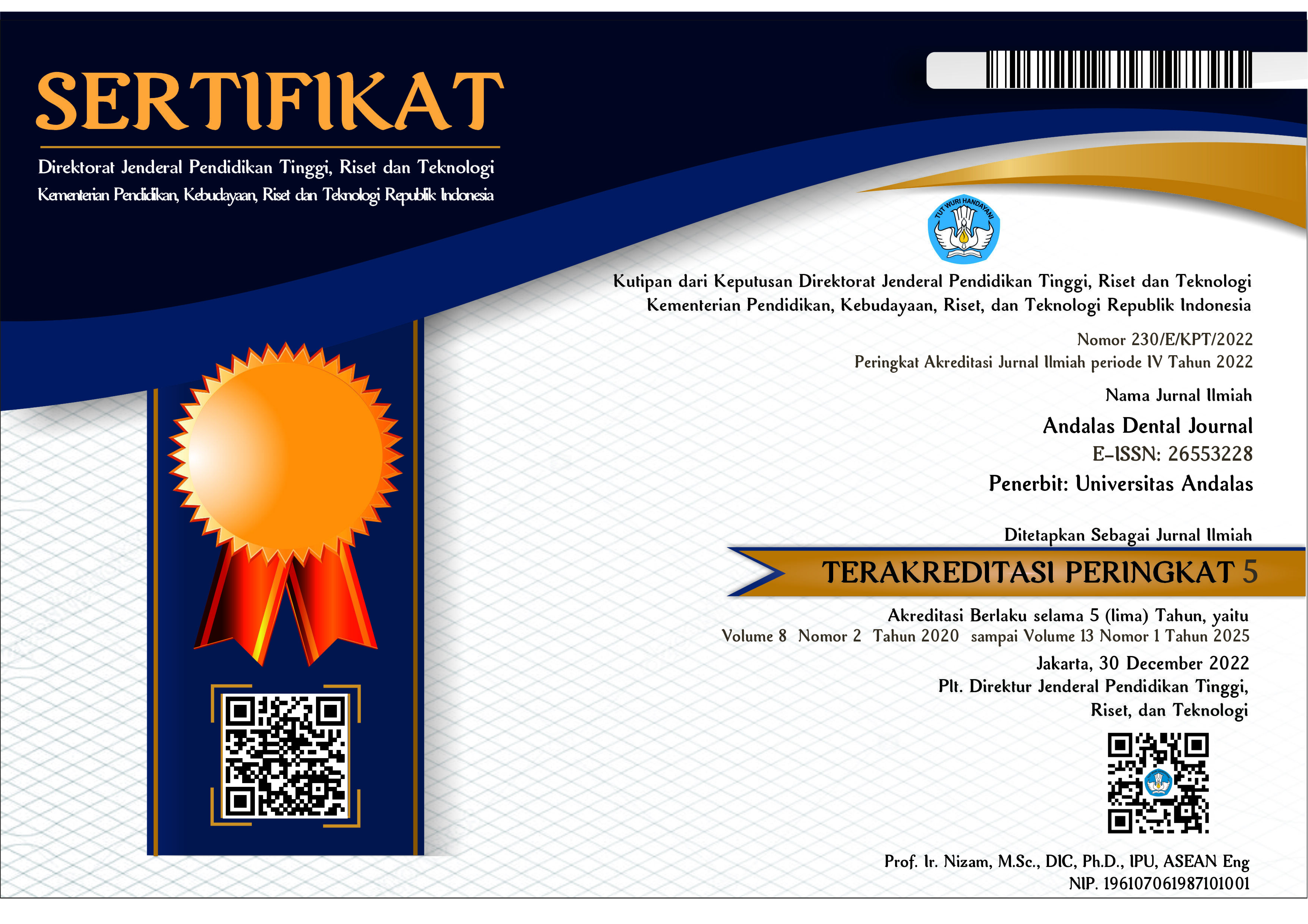RESTORASI PASAK FIBER DAN PORCELAIN FUSED TO METAL PADA FRAKTUR GIGI INSISIF RAHANG ATAS PASCA PERAWATAN ENDODONTIK
Abstract
Teeth with is treated with endodontic treatment has own problems, tends to be weaker because of dentin removal and reduced moisture content, so, requires post and crown restoration treatment. The principle of making restoration should be to restore function, esthetic, and to distribute chewing load, so, both teeth and its crown can be used in a long time in oral cavity. This case report described about 23-year-old female patient with a history of truma motor vehicle accident. Tooth 11,12,21 was fractured 2/3 crown with pulp exposed. The diagnosis which estabilished for this case is irreversible pulpitis and the treatment planning are one visit root canal treatment, post and fiber insertion and porcelain fused to metal restoration. On the first visit, acces preparation with crown down technique was done and rootcanals filled with gutta percha and sealer AH 26 with lateral condensation technique. Fiber post was insertion in next visit and cementation with dual-cured resin. Core was made in resin composite and porcelain fused to metal was inserted after control of patient condition in 1 week. One of those methods that used in this case is prefabricated glass fiber post, because of its biocompatibility, more aesthetic, has a modulus of elasticity which is resemble with dentine. Pressure that its transmitted by post to dentin is low, so, this is minimize a root fractured. The result of this treatment and the restoration was good, there were no patient complaints, and normal gingival seemed around the teeth. Restoration post endodontic treatment can be done with several techniques, one is post and porcelain fused to metal to produce a good restoration.















